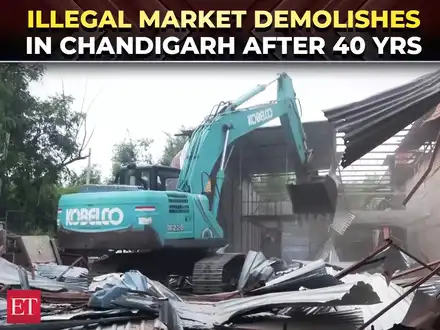
Bulldozers at Dawn: A Community Uprooted Overnight
At sunrise on July 20, 2025, a convoy of bulldozers arrived in Chandigarh’s Sector 56, clearing out one of the region’s oldest and most active furniture markets.
For nearly 40 years, this area was a buzzing trade hub—home to woodworkers, polishers, upholsterers, and daily-wage helpers.No warning. No compensation. No time to even salvage tools or materials.
A Market Full of Life, Not Just Wood
This wasn’t some temporary roadside bazaar. The market had become a local landmark—frequented by middle-class families looking for affordable furniture, contractors sourcing custom pieces, and even college students on tight budgets.
Shops Inside the seemingly chaotic maze of tin roofs and timber stacks, there was order, rhythm, and trust. Clients knew where to find the best deals. Workers knew each other’s routines.
The value of this market wasn’t just economic—it was social and cultural too.
This one market alone supported over 800 people—directly and indirectly. Families who lived on daily wages now face complete uncertainty.
Here’s what the broader picture looks like:
- 93% of India’s workforce is in the informal sector
- The average daily earnings for a worker here were ₹400–₹700
Legal shop rentals in commercial areas are far too expensive for micro-businesses. Most stall owners don’t have tenancy papers or formal agreements, which automatically disqualifies them from municipal licensing.
Due Process?
Yet, traders in Chandigarh claim they received no official notice. No grace period offered. Just bulldozers—fast, final, and unforgiving.
Many had pending orders to fulfill, some had tools worth lakhs inside their stalls, others had unpaid EMIs counting on weekly income.
From Delhi to Mumbai: A Nationwide Pattern
Chandigarh’s story is far from isolated. projects often prioritize visuals over livelihoods.
In recent years:
- Delhi saw over 200 stalls at Yamuna Bank razed in 2022
- Legal routes rarely helped, and public attention faded too quickly.
What Are We Really Building?
It’s time we ask the harder question: who benefits from all this development?
An inclusive city must offer space to the carpenter, the electrician, the mason, and the vendor. That means thoughtful zoning, affordable licensing, and supportive policies.
What Needs to Happen Next
There are real, actionable steps that governments and civil society can take. Clear, affordable pathways to legitimacy must be created—with offline help, not just online portals.
And most importantly, authorities must stop treating working-class spaces as expendable. These are not obstacles to development. They’re the foundation of urban life.
A Demolished Market, A Test for Our Urban Future
Are we building inclusive, equitable spaces where every worker counts—or are we designing shiny cities that push their most essential workers to the margins?
The next time a city plans to “beautify” or “modernize,” let’s hope it remembers the people who were there first.
FOR MORE BLOGS – beyondthepunchlines.com

 Add to favorites
Add to favorites







